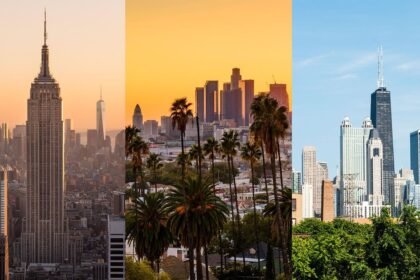Underwater bushfire Australia is the alarming phrase experts are using to describe the ongoing coral bleaching crisis devastating the nation’s reefs. Australia is home to some of the most iconic natural wonders on Earth. The Great Barrier Reef, stretching along the north-east coast, is celebrated as the world’s largest coral reef system and a UNESCO World Heritage Site. Known for its vibrant marine biodiversity, it is often described as a diver’s paradise.
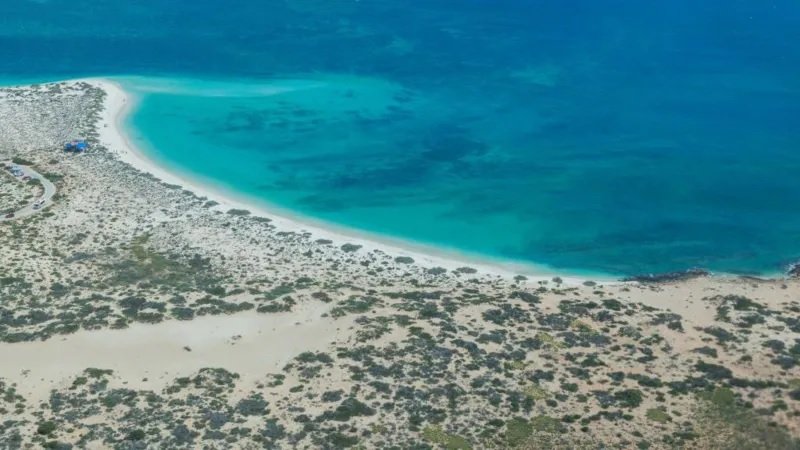
However, on the opposite side of the country lies another natural marvel: Ningaloo Reef, located along Western Australia’s north-western coastline. While not as globally famous, Ningaloo holds its own record-breaking title — it is the largest fringing reef on the planet and is also recognized as a UNESCO World Heritage Site.
Just 14 hours north of Perth, Ningaloo’s turquoise waters are lined with coral gardens that stretch for hundreds of kilometers, attracting manta rays, reef sharks, and the world’s largest fish, the whale shark. But this spectacular ecosystem is now under threat.
Underwater Bushfire Australia: Marine Heatwave Threatens Ningaloo
This year, Ningaloo has faced unprecedented stress due to a powerful marine heatwave. Rising ocean temperatures have caused the corals to turn white, a phenomenon known as coral bleaching. While some corals may recover if conditions improve, scientists are concerned that many may not survive.
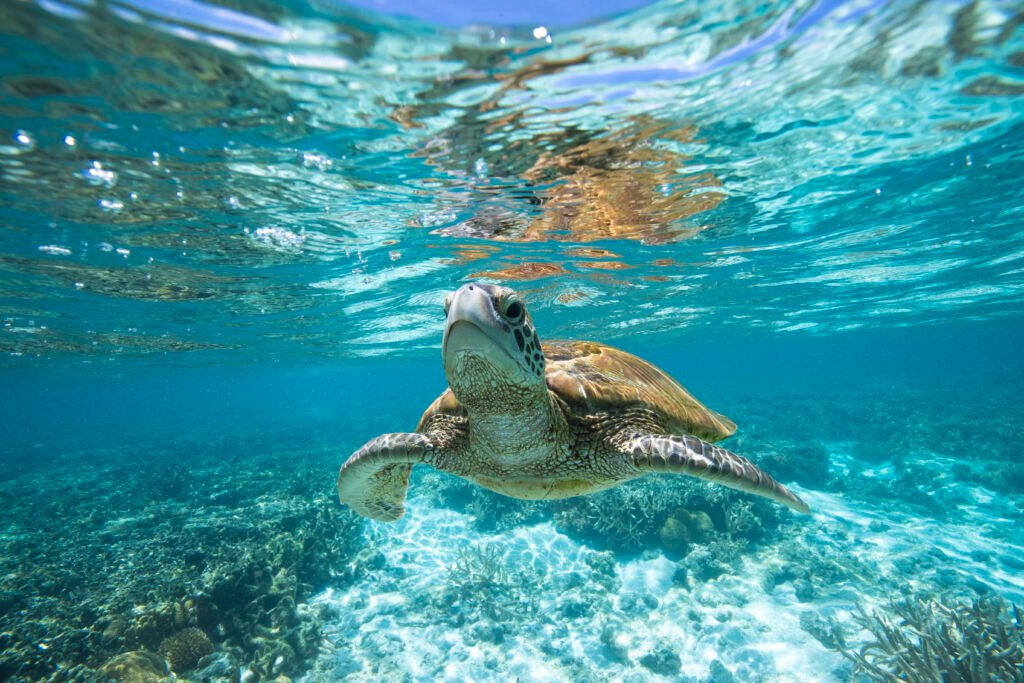
What makes this event alarming is that for the first time in recorded history, both Australia’s western and eastern reef systems — Ningaloo and the Great Barrier Reef — have suffered bleaching at the same time.
“It’s like a raging underwater bushfire that’s been burning for months,” says Paul Gamblin of the Australian Marine Conservation Society. “The scale of damage is shocking and far from normal.”
Underwater Bushfire Australia – How Did This Crisis Start?
The marine heatwave impacting Ningaloo began in the Caribbean in 2023 before moving through the Indo-Pacific region, leaving damaged coral ecosystems in its wake. By 2024, the Great Barrier Reef had already experienced bleaching, and now Ningaloo is facing the same fate.
This phenomenon is part of the fourth global coral bleaching event, which experts say has affected more than 80% of coral reefs worldwide.
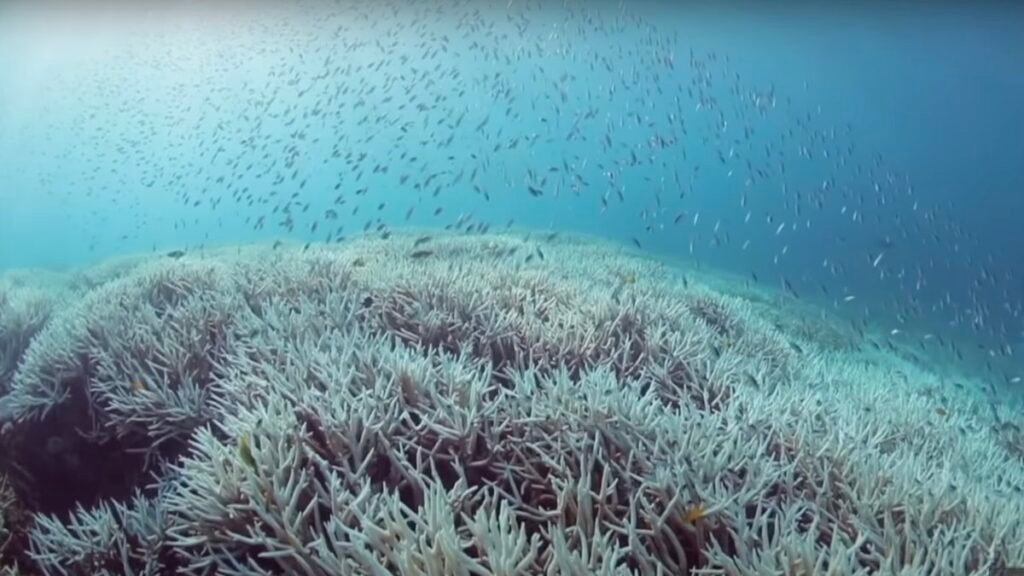
Dr. Kate Quigley, a principal research scientist at the Minderoo Foundation, explains that corals rely on tiny algae called zooxanthellae living inside their tissues for survival. “When water temperatures rise beyond a certain point, this relationship breaks down, leading to bleaching. It’s similar to when our own body systems malfunction due to illness,” she says.
What’s more concerning is the prolonged heat stress observed this year. Normally, water temperatures cool after summer, but this time, elevated temperatures have persisted well past April.
Why Ningaloo’s Future Looks Fragile
“In past bleaching events, corals had time to recover as water temperatures dropped,” says Dr. Quigley. “This time, if the heat continues, we could see mass coral mortality in the coming months.”
Government agencies, including Western Australia’s Department of Biodiversity, Conservation and Attractions, are conducting follow-up surveys to assess coral survival. Dr. Tom Holmes, the department’s Marine Science Programme Leader, notes: “Some corals can remain bleached for months and still recover, but we’ll only know the full impact after further monitoring.”
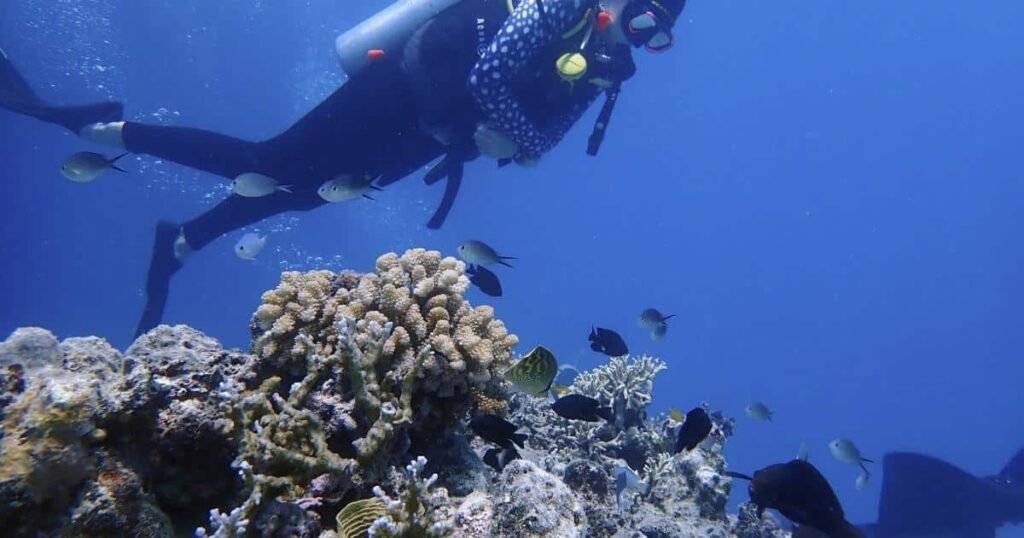
For divers and tourists visiting Ningaloo, the visual damage is already striking. “It was like snorkelling over a ghost reef,” says traveler Jenna-Rae Clark. “The colours and life were gone.”
Local residents fear the decline could deter tourism, which supports around 200,000 visitors annually. “There are still stunning areas of the reef worth exploring,” says conservationist Sara Morgillo. “But witnessing this damage firsthand is both heartbreaking and eye-opening.”
Climate Change and Carbon Emissions – The Root Cause
Scientists agree that rising carbon emissions are the primary driver of marine heatwaves. According to NASA, the oceans absorb 90% of global warming, with the past decade being the warmest since records began.
Adding to the challenge is the presence of the North West Shelf gas project, one of the world’s largest fossil fuel operations, located not far from Ningaloo. The Australian government’s decision to extend the project’s lifespan until 2070, along with plans for new gas exploration, has sparked criticism from environmentalists.
“The idea of approving more fossil fuel projects while reefs like Ningaloo are dying is incomprehensible,” says Gamblin. “These ecosystems are as valuable as the Amazon or the Serengeti, yet they’re being sacrificed.”
Can We Save Ningaloo?
While tackling climate change remains the ultimate solution, scientists are working on local conservation efforts. At the University of Queensland, Dr. Chris Roelfsema is using drone imaging to map coral health, helping to monitor recovery patterns.
Individual actions also matter. “Reducing fossil fuel use, voting for leaders who prioritize renewable energy, using public transport, and cutting down on energy consumption all make a difference,” Dr. Roelfsema says.
Meanwhile, Dr. Quigley and her team are experimenting with selective breeding of corals to identify heat-resistant strains. By raising coral “babies” in controlled conditions, they aim to repopulate reefs with species better suited to warming oceans. Underwater bushfire Australia.
However, she admits this is not a long-term solution. “We can’t restore every reef on Earth this way. The real solution is cutting emissions.”
A Race Against Time
Despite being underwater, coral reefs play a vital role in protecting coastlines, supporting marine life, and sustaining human livelihoods. They act as natural barriers against storms, provide food for millions, and generate billions in tourism revenue globally.
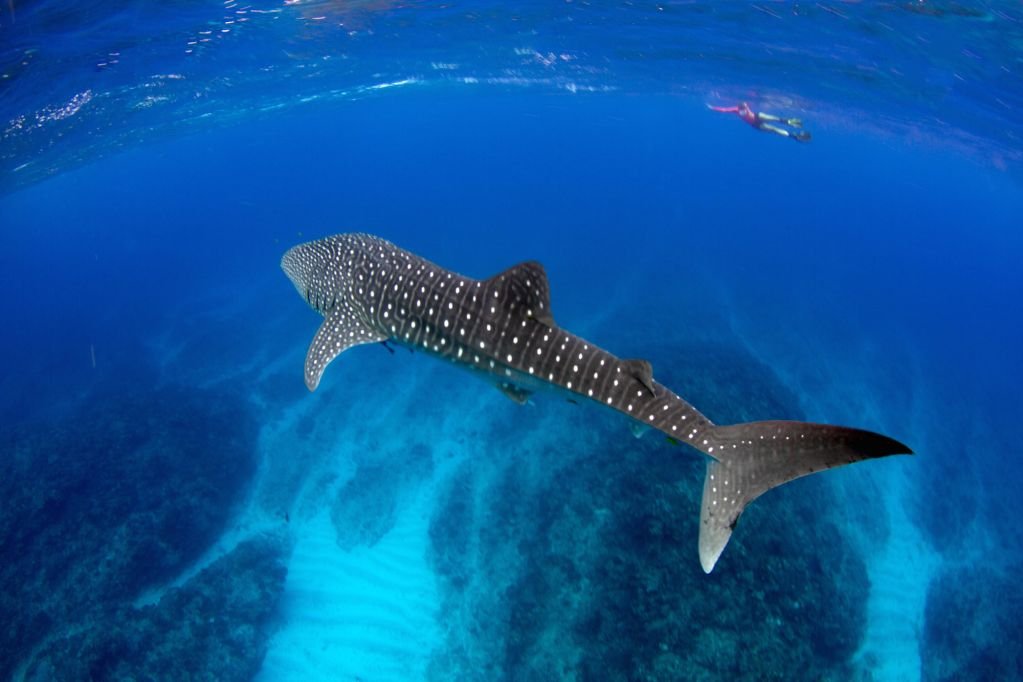
“Reefs are the rainforests of the ocean,” says Gamblin. “If we lose them, we lose a huge part of the planet’s life support system.”
The ongoing underwater bushfire cooking Australia’s reefs is a stark warning of what’s to come if action isn’t taken. Without immediate global efforts to curb carbon emissions, iconic ecosystems like Ningaloo and the Great Barrier Reef may not survive the century. Underwater bushfire Australia.



